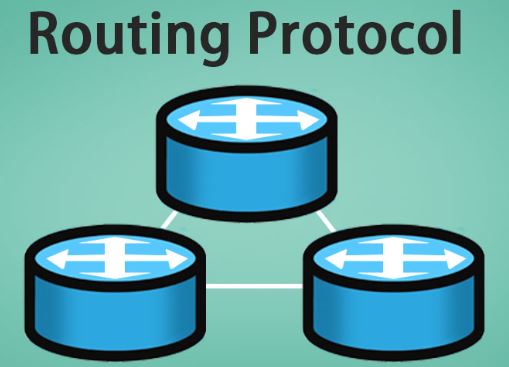In the previous part, we have talked and learned about the VLSM, subnetting and categorization of routing protocols. Check Here.
Now, we will discuss about the three widely used routing protocols and their usage for a small to large size network.

Routing protocols:
RIP
Routing information protocol or RIP is a dynamic routing protocol which works on hop count metrics. The hop count is used to find out the best path from source to destination. RIP is a distance vector routing protocol which has administrative distance (AD) number of 120. It works on application layer of OSI model and uses port 520 for communication.
Count of hops – this term defines the number of routers or called nodes fall between the source to destination. In a RIP network, lowest hop count is taken as best route to reach a destination. RIP allow a limited number of hops in a network to prevent routing loops. It allows only 15 hops in a single RIP network.
We should know that RIP has its two versions as RIPv1 and RIPv2 and both offer different features. Majorly, RIP v1 is a classful protocol and RIP v2 is a classless routing protocol.
OSPF
Open shortest path first or OSPF is a link state routing protocol. It works based on the shortest path from source to destination. It is developed by the IETF as an interior gateway protocol. OSPF is suitable for a large size network where it works based on an autonomous system. OSPF has administrative distance number of 110 and uses port 89.
Terms used in OSPF –
- Router id – we need to set up a router id for each router in the network which represent a highest active IP address on that router.
- Priority – this is an 8-bit value assigned to a router which is used while selecting a DR and BDR in the OSPF network.
- DR or designated router – a DR is elected in the network to avoid adjacencies. All the routing updates or LSA first sent to the DR and then it distributes to all other routers. In an OSPF network, all the routers request for routing updates to the DR and the DR will respond to them.
- BDR or backup designated router – BDR is a backup router of DR in an OSPF network. The BDR will active when the DR will go down.
- Selection of BDR and DR – a DR is selected based on the priority number. Highest priority router will become the DR. If there is a tie between the priority level than the first highest priority loopback address is considered as DR. If there is no loopback address configured than the highest active IP address on an interface on a router will be considered as DR.
EIGRP
It is a dynamic routing protocol which uses the best path between the layer three devices to deliver a packet. This protocol works on network layer and uses port 88. It uses different AD values such as 5 for route summary, 170 for external routes and 90 for internal routes. EIGRP uses some messages to communicate to the neighbor devices, as:
- Hello message – these are kept alive messages which exchanged between the routers in the EIGRP network. The hello messages are also used to discover and recover neighbor routers.
- Null update – these messages are used to calculate the round trip timer and retransmission timer.
- Full update – these messages are exchanged after the hello message which is used to find out the best route.
- Partial update – these messages are used to exchange topology change update and contain only changed route detail.
- Reply message – these messages are acknowledgement of a query message asked by a requesting router.
- Acknowledgement message – these messages are used to exchange updates, replies and queries with no data.
- Timers – EIGRP uses two types of timers, as hello and dead timer. Hello timer is the time interval after that a router send hello packet. While the dead timer is the time interval after that a neighbor declared as dead. Hello timer is 5 second and dead timer is 15 second by default.
BGP
This protocol enabled the internet to work. This border gateway protocol or BGP enable devices to communicate over a large autonomous system. BGP works by peering the routers to reach a packet nearest to its destination. It is mainly used where two networks are connected and need to share data between same ASN (Autonomous number system). In networking, there are two types of BGP protocols works as; iBGP and eBGP. Both iBGP (internal BGP) and eBGP (external BGP) follow different methods to send and receive data. eBGP is supported by iBGP to advertise routes and forward it in the entire network.
Weight, local preference, locally produced, AS Path length, origin type, multi-exit discriminator, eBGP over iBGP, IGP metric, router ID, cluster list, and neighbor IP address are all factors that BGP can use to make routing decisions. When something changes, BGP just provides updated router table data. As a result, topology changes are not automatically discovered, requiring the user to manually configure BGP. In terms of security, the BGP protocol can be authenticated, allowing only authorized routers to communicate with one another.
Reference
https://www.ibm.com/docs/en/zos/3.1.0?topic=omproute-routing-information-protocol
https://www.ibm.com/docs/en/i/7.4?topic=routing-open-shortest-path-first
https://www.ciscopress.com/articles/article.asp?p=687478&seqNum=2
